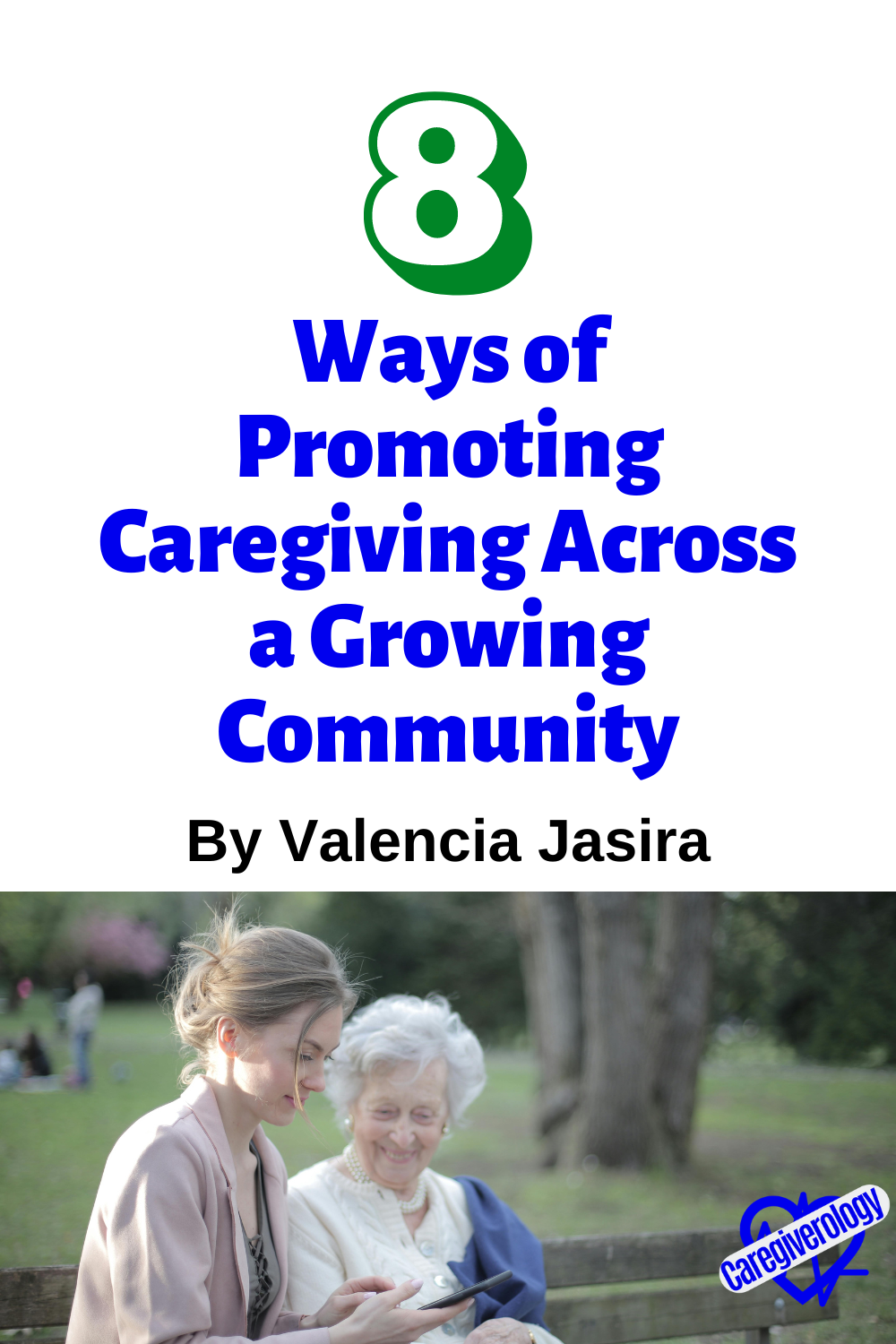8 Ways of Promoting Caregiving Across a Growing Community

As communities expand and their demographics evolve, the imperative to foster strong caregiving structures becomes increasingly critical. This growing need exceeds the traditional boundaries of caregiving, pushing towards more innovative, inclusive, and flexible approaches to support individuals requiring care. Promoting caregiving effectively demands a multifaceted strategy that not only addresses the immediate needs but also anticipates the future challenges of caregiving within these growing communities. Emphasizing strategic planning, community involvement, and the pivotal role of education, this guide talks about the various pathways through which caregiving can be enhanced and expanded across communities.
1. Foster Community-Based Caregiving Networks
The foundation of effective caregiving in a growing community lies in the strength of its networks. By cultivating strong, localized caregiving networks, communities can create a supportive ecosystem that benefits both caregivers and those they care for. These networks act as vital channels for resource sharing, knowledge exchange, and emotional support, transforming caregiving into a shared community responsibility. Initiatives such as local caregiver meetups, online forums, and community caregiving events can significantly enhance these networks, making them more accessible and impactful.
2. Leverage Educational Programs
The role of education in promoting caregiving cannot be overstated. Through targeted educational programs, communities can equip caregivers with the comprehensive skills and knowledge required to meet an array of care needs effectively. Courses leading to a public health degree, for instance, offer invaluable insights into various aspects of caregiving—from mental health support and chronic disease management to emergency response and preventive care. Such programs not only enhance the competency of caregivers but also broaden their understanding of public health principles, enabling them to provide care that is both informed and empathetic. Furthermore, these educational pathways instill a holistic perspective in caregivers, preparing them to navigate the complexities of caregiving in a growing community.
3. Implement Technology-Driven Solutions
The integration of technology in caregiving presents a unique opportunity to enhance the reach and efficiency of caregiving services. From telehealth platforms that facilitate remote care consultations to mobile apps designed to aid caregivers in their daily tasks, technology can significantly streamline caregiving processes. Additionally, online support forums and digital health records offer accessible resources and tools for both caregivers and those in their care. By harnessing technology, communities can make caregiving more adaptable to individual needs and circumstances, ensuring that care is not only effective but also inclusive and accessible to all.
4. Encourage Volunteerism in Caregiving
Volunteerism serves as a critical pillar in bolstering caregiving within a community. Encouraging members of the community to volunteer their time and skills in caregiving roles can help address the increasing demand for care. Initiatives that promote volunteerism—whether through local organizations, social media campaigns, or community outreach programs—can significantly expand the pool of individuals available to provide care. Moreover, these efforts cultivate a culture of empathy and mutual assistance, reinforcing the notion that caregiving is a collective responsibility. By embracing volunteerism, communities can enhance their caregiving capacity and foster a sense of unity and compassion that enriches the lives of all involved.
5. Advocating for Policy Support and Funding
The foundation of a strong caregiving infrastructure lies in supportive policies and adequate funding. Advocacy efforts play a crucial role in highlighting the importance of caregiving services and securing the necessary resources to sustain them. Engaging with policymakers, participating in advocacy groups, and raising public awareness about the critical role of caregivers are essential actions. These efforts ensure that caregiving is recognized not just as a community responsibility but as a societal priority, warranting investment and support at all levels of government. Securing policy support and funding paves the way for more comprehensive, accessible, and effective caregiving services, benefiting both caregivers and those they serve.
6. Strengthening Support for Professional Caregivers
Professional caregivers, the backbone of caregiving services, require strong support systems to thrive. Addressing their needs through policies that promote well-being, professional development, and fair compensation is essential. Creating environments where caregivers feel valued and supported not only enhances their job satisfaction but also improves the quality of care they provide. Professional development opportunities, mental health resources, and recognition programs are just a few ways communities can support their caregivers, ensuring the sustainability and growth of caregiving as a vital profession.
7. Emphasizing Preventative Care and Wellness
A proactive approach to caregiving involves a strong emphasis on preventative care and wellness programs. By focusing on prevention and early intervention, communities can reduce the demand for caregiving services and improve overall health outcomes. Wellness programs that promote healthy lifestyles, disease prevention, and early detection can significantly impact the community's health, reducing the incidence and severity of conditions that require caregiving. This preventative approach not only eases the caregiving burden but also fosters a healthier, more resilient population.
8. Building Partnerships with Local Organizations
The complexity of caregiving demands cannot be met by any single entity alone. Collaborations and partnerships among local healthcare providers, non-profit organizations, educational institutions, and community groups can enhance the scope and effectiveness of caregiving services. These partnerships facilitate the sharing of resources, knowledge, and expertise, leading to innovative solutions and more comprehensive care strategies. By working together, these organizations can create a cohesive network of support that addresses the multifaceted needs of caregiving in a growing community.
Conclusion
Promoting caregiving across a growing community is an endeavor that requires dedication, collaboration, and innovation. From the foundational steps of enhancing caregiver education and embracing technology to the critical strategies of advocating for support, caring for caregivers, focusing on prevention, and fostering partnerships, each approach contributes to a stronger, more inclusive caregiving landscape. This comprehensive guide highlights the importance of a multifaceted approach to caregiving, one that is adaptive, empathetic, and rooted in the community. As we look towards the future, it is clear that the success of caregiving initiatives will depend on our collective ability to implement these strategies, ensuring that every member of the community has access to the care and support they need.
Thank you Valencia Jasira for contributing this article.
Guest Articles Written for Caregiverology
From Ways of Promoting Caregiving Across a Growing Community to Home
Recent Articles
-
Common Truck Crash Injuries and Legal Remedies - Caregiverology
Jul 19, 25 10:49 AM
Known for its sun-drenched beaches, vibrant arts scene, and bustling maritime industry, Fort Lauderdale is a city that sees heavy traffic both on its roads and at its busy port. Unfortunately, with th… -
Why Expert Legal Help Matters After Serious Injury - Caregiverology
Jul 19, 25 10:35 AM
In Houston, over 67,600 car crashes occurred in 2023, resulting in 290 fatalities and 1,612 serious injuries. That’s roughly 185 accidents every day. -
How Life Care Planners Support Injury Recovery - Caregiverology
Jul 19, 25 10:18 AM
In Los Angeles, life care planners play a vital role in supporting injury recovery, especially for individuals facing catastrophic injuries such as traumatic brain injuries or spinal cord damage.





New! Comments
Have something to say about what you just read? Leave a comment in the box below.